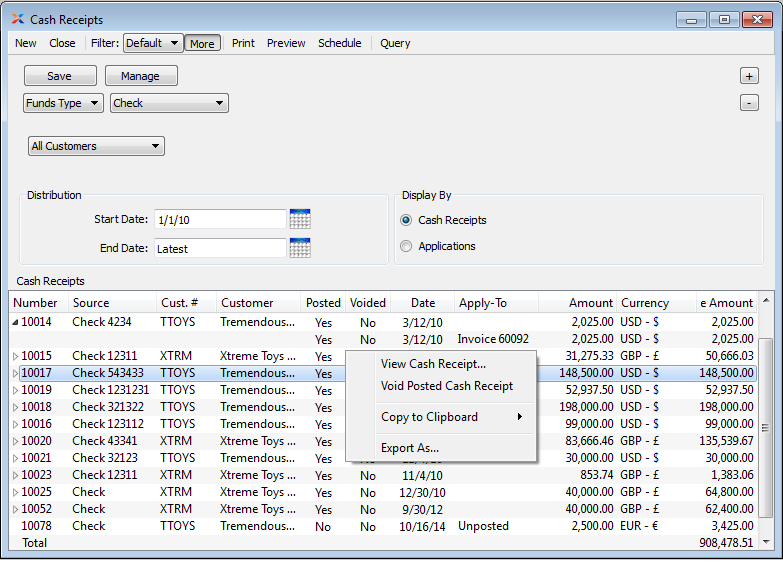
|
xTuple ERP Reference Guide |
The "Cash Receipts" screen provides historical information about Cash Receipts and their applied-to documents. Here are some tips for using this screen:
Narrow your searches by funds type, customer type, or distribution date range to simplify the process of locating records.
Be sure to select the QUERY button. If you are not seeing any results, this is probably the reason why.
The display by option allows you to view either Cash Receipts themselves or the documents they were applied to.
Use the right-click menu to void posted Cash Receipts. When a Cash Receipt is voided, any applications will also be reversed. Keep in mind that any Credit Memos or Customer Deposits created from the unapplied balance when the original Cash Receipt was posted will not be reversed when a Cash Receipt is voided. Instead, a misc. Receivables Debit Memo will be created in the amount of the original unapplied balance.
To review Cash Receipt information prior to version 3.3.0, use the Receivables Applications report. The "Cash Receipts" screen does not support Cash Receipt history prior to version 3.3.0.
The following screenshot shows the "Cash Receipts" screen:

The default filter on the "Cash Receipts" screen shows Cash Receipts for all Customers. You can build your own search criteria using the following options:
Select a filter from the list of available filters, then select the QUERY button to generate search results. Only saved filters will appear in this list.
Select this button to show the parameters underlying the saved filter. To hide the parameters, click the MORE button a second time.
When building a custom query, you have the following options:
Select to add a new parameter to the query.
Select to remove a parameter from the query. This option is disabled for default parameters.
Select to save your filter for future use. Saved filters will appear in the list of available filters.
Select to manage your saved filters. To learn more about managing filters, please see Section 2.1.2, “Search Filters”.